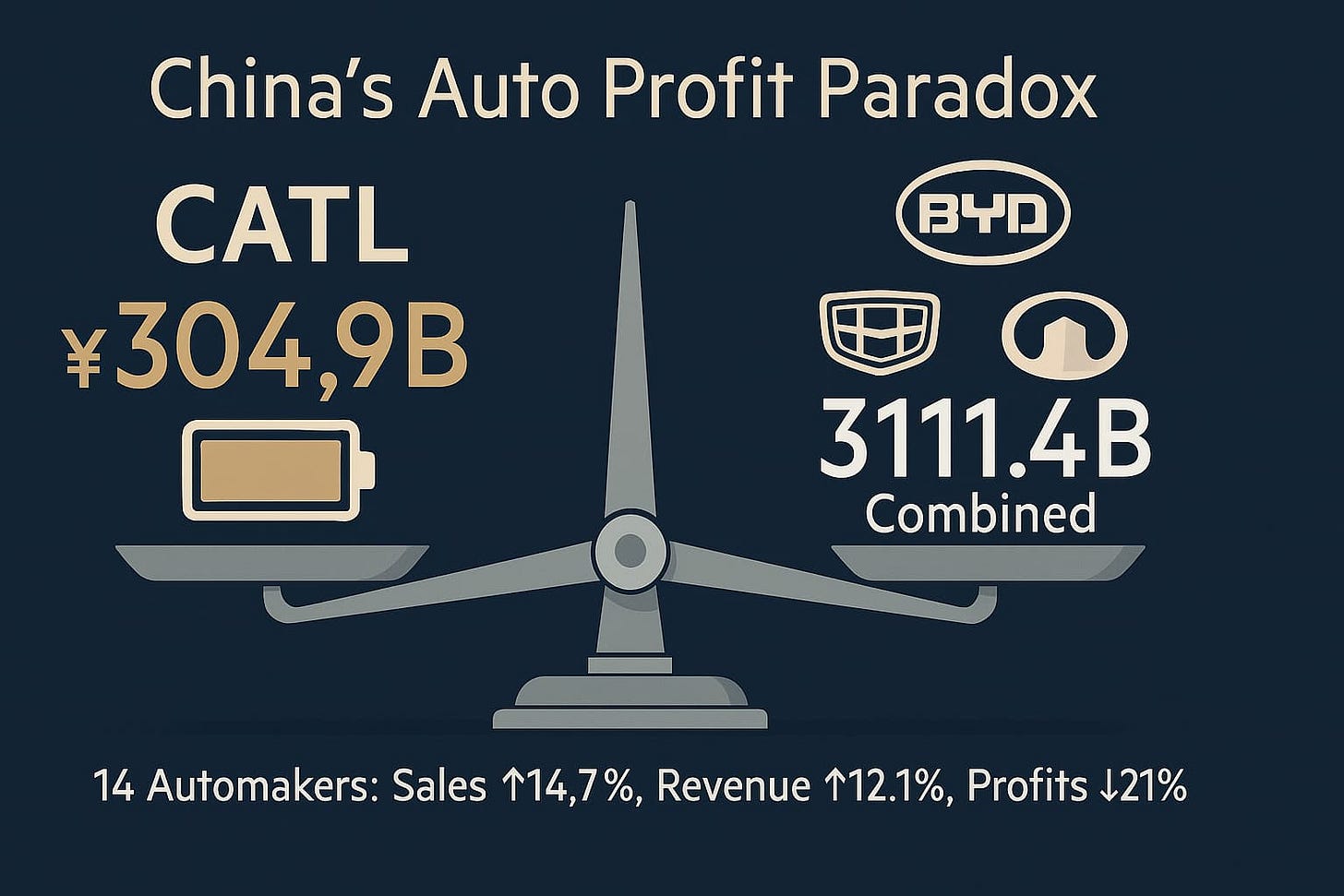China Autos vs CATL: Who Really Makes the Money?
Carmakers toil, CATL cashes in.
Editor’s note: This edition of Flashpoint dissects the sharpest fault line in China’s EV boom: automakers chase volume, while CATL captures the profits. In under 700 words, we cut through the numbers to show why the battery maker looks more like Intel in the PC era than any car brand today. Flashpoint is Hello China Tech’s premium quick-strike column — concise, selective, and built to explain market-moving events before the noise takes over.
China’s carmakers are working harder, selling more, and earning less. In the first half of 2025, 14 listed auto groups shifted 11.02m vehicles, a jump of 14.7% from a year earlier. Revenues rose 12.1% to Rmb1.39tn. But profits shrank: combined net income fell 21% to just Rmb25.6bn. The joke that the industry toils for “King Ning” – battery champion CATL – is looking less like humour and more like financial reality.
The comparison is stark. The three most profitable carmakers – BYD, Geely and Great Wall – together made Rmb31.1bn in net profit. That merely matched the Rmb30.5bn that CATL earned on its own. The latter’s profit machine now runs at the equivalent of Rmb1.68bn a day, enough to build 56 battery-swap stations before dinner. Market capitalisation tells the same story: the trio of auto leaders together are valued at about Rmb1.28tn. CATL alone is worth Rmb1.75tn.
The explanation lies less in management competence than in business models. CATL sells batteries, the ultimate “shovel” in the electric-vehicle gold rush. Its moat is technology and scale. Years of research and customer lock-in have delivered it the status of world’s largest EV battery supplier. That grants bargaining power over carmakers and cushions it against commodity volatility. Margins hold up because CATL’s product is a near-indispensable input.
👉 Beyond the Joke: What Investors Should Really Learn from CATL’s Dominance.


